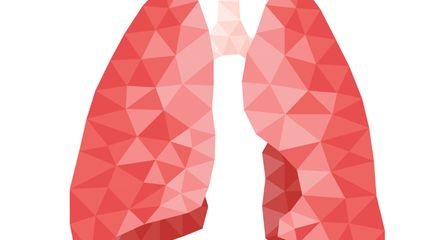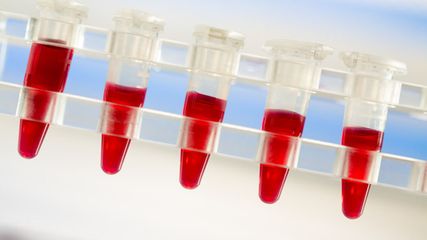
©
Getty Images
New Data in the Molecular Pathology of T-Cell Lymphomas
Jatros
Autor:
Prof. Dr. med. Laurence de Leval, PhD
Institute of Pathology<br> Lausanne University Hospital (CHUV)<br> E-Mail: laurence.deleval@chuv.ch
30
Min. Lesezeit
12.09.2019
Weiterempfehlen
<p class="article-intro">Peripheral T-cell lymphomas (PTCLs) comprise a heterogeneous group of malignancies derived from mature T- or natural killer (NK) cells, representing less than 10 % of all non-Hodgkin lymphomas. With few exceptions, PTCLs are usually aggressive. Recent findings in molecular pathology have led to a significant improvement of disease subtype classification and understanding of cancer signaling.</p>
<p class="article-content"><div id="keypoints"> <h2>Keypoints</h2> <ul> <li>Recent progress in the molecular characterization of PTCLs have substantially improved their classification and our understanding of the oncogenic pathways operating in different entities.</li> <li>The unique mutational landscape of TFH-PTCL opens the field for using emerging epigenetically- or signaling-modulating therapies.</li> <li>Systemic ALCLs comprise genetically distinct defined subgroups associated to distinct clinical features.</li> <li>The notion of cell of origin is an important determinant of PTCL biology and classification. This concept will likely be expanded to delineate PTCL-NOS subgroups.</li> </ul> </div> <p>There are about 30 PTCL entities in the current World Health Organization (WHO) classification of lymphomas, grouped according to their clinical presentation into predominantly leukemic, or as primarily nodal, extranodal or cutaneous diseases (Table 1).<sup>1</sup><br /> Novel data derived from high-throughput genomic studies have contributed to refining diagnostic and classification criteria of PTCLs and to a better understanding of their pathogenesis (Figure 1).<sup>2</sup> Mutations and copy number variations (CNV) frequently target different classes of epigenetic modifiers, T-cell receptor and co-receptors signaling pathways, and components or regulators of the Janus kinase (JAK)/signal transducer and activator of transcription (STAT) pathway. Although a few variants are characteristic of certain PTCL subtypes, there is an overlap in the mutational landscapes of different entities. Immune evasion has also emerged as another oncogenic mechanism in PTCLs. <em>Programmed cell death-1 ligand-1 (PD-L1)</em> is expressed at variable frequencies in different diseases, suggesting that PD-1 blockade may represent an efficient therapy in some patients; however, because PD-1 also acts as a tumor suppressor which is inactivated in a fraction of PTCLs, PD-1 checkpoint inhibition may also potentially lead to unwanted effects.<sup>3</sup> Constitutive genetic background may confer susceptibility to PTCL development, as suggested by HLA associations to celiac disease and enteropathy-associated T-cell lymphoma; also demonstrated by the recent finding of germline <em>hepatitis A virus cellular receptor 2 (HAVCR2)</em> mutations altering T-cell immunoglobulin and mucin-domain containing-3 (TIM-3) in subcutaneous panniculitis-like T-cell lymphomas with hemophagocytic lymphohistiocytic syndrome.<sup>4</sup><br /> Cell of origin is a major determinant of PTCL biology. Neoplasms of the innate lymphoid cells (NK, NK-like T- and gamma- delta T-cells) are predominantly extranodal, cytotoxic and – with the exception of T-cell large granular lymphocytic and chronic NK cell leukemias – frequently highly aggressive. Lymphomas of the adaptive immune system (derived from alpha- beta CD4+ or CD8+ T-cells) constitute the majority of PTCLs and often involve lymph nodes. This review will focus on nodal PTCLs.</p> <p><img src="/custom/img/files/files_datafiles_data_Zeitungen_2019_Jatros_Onko_1905_Weblinks_jat_onko_1905_s48_tab1_leval.jpg" alt="" width="550" height="1128" /></p> <p><img src="/custom/img/files/files_datafiles_data_Zeitungen_2019_Jatros_Onko_1905_Weblinks_jat_onko_1905_s49_fig1_leval.jpg" alt="" width="550" height="451" /></p> <h2>Nodal lymphomas of T-follicular helper (TFH) derivation</h2> <p>Cell derivation from CD4+ TFH cells is the defining feature of the most prevalent group of nodal lymphomas including angioimmunoblastic T-cell lymphoma (AITL) and related entities (follicular T-cell lymphoma and nodal lymphoma with a TFH phenotype). AITL typically manifests with systemic symptoms and biological abnormalities and consists of a polymorphous infiltrate comprising of TFH neoplastic cells within an abundant polymorphous microenvironment associated to proliferation of veinules and follicular dendritic cells.<sup>5</sup> In addition to sharing a TFH immunophenotype and gene expression signature<sup>6</sup>, these lymphomas disclose a rather homogeneous mutational landscape which recapitulates a multi-step oncogenic process. This typically consists of epigenetic deregulation <em>(ten-eleven translocation-2 [TET2] +/- DNA (cytosine-5)-methyltransferase 3A [DNMT3A]</em> mutations, often occurring at early stages in hematopoietic progenitors)<sup>7, 8</sup>, and second hit mutations including a hotspot <em>Ras homolog gene family, member A (RHOA)<sup>G17V</sup></em> mutation in up to 80 % of cases and other gain-of-function mutations targeting the T-cell receptor signaling pathway (phospholipase C, gamma 1 [PLCG1], CD28, PIK3 components, caspase recruitment domain-containing protein 11 [CARD11], …).<sup>9, 10</sup> Moreover, fusions involving <em>spleen tyrosine kinase (SYK) and interleukin-2-inducible T-cell kinase (ITK), CD28 and cytotoxic T-lymphocyte-associated protein 4 (CTLA4) or CD28 and inducible T-cell co-stimulator (ICOS)</em> are detected at lower frequency.<sup>11</sup> <em>Isocitrate dehydrogenase 2 (IDH2)</em> mutations at the R172 residue resulting in production of an oncometabolite<sup>8</sup> are present in about one third of AITL cases.<sup>12</sup> Transgenic mouse models with expression of <em>RHOA<sup>G17V</sup></em> in the T-cell compartment demonstrated the role of <em>RHOA<sup>G17V</sup></em> in T-cell development and TFH differentiation and in inducing autoimmunity. However, additional <em>TET2</em> inactivation is required for lymphoma development, and these mouse tumors are dependent on ICOS/PIK3/mechanistic target of rapamycin(MTOR) signaling.<sup>13</sup></p> <h2>Anaplastic large-cell lymphomas (ALCLs)</h2> <p>ALCLs have in common a large-cell anaplastic morphology, strong CD30 expression, and frequent phospho-<em>STAT3</em> activation. Systemic cases (anaplastic lymphoma kinase [ALK]-positive and ALK-negative) represent 15–20 % of non-cutaneous PTCLs. In ALK-positive ALCL, which occurs mainly in children or young adults and has an excellent overall prognosis, ALK fusion proteins resulting from the fusion of ALK to various gene partners, most commonly <em>nucleophosmin (NPM1)</em>, drive lymphomagenesis by several mechanisms, among which activation of <em>STAT3</em> plays a prominent role. ALK-negative ALCL tends to occur in older individuals and encompasses clinical and genetic heterogeneity. Those with rearrangement of the <em>dual specificity phosphatase 22 (DUSP22)</em> locus at 6p25 (one third of the cases) have unique molecular features – lack of <em>STAT3</em> activation, DNA hypomethylation and an immunogenic phenotype<sup>14</sup> –, and frequently harbor a hotspot <em>MSC<sup>E116K</sup></em> mutation in the <em>musculin</em> gene, which drives cell cycle progression, and can be targeted with bromodomain and extraterminal motif (BET) protein inhibitors.<sup>15</sup> <em>DUSP22</em>-rearranged ALCLs have been reported to usually have a good outcome, but this was not confirmed in a recent study.<sup>16</sup> The small subset of ALK-negative ALCLs with <em>tumor protein 63 (TP63)</em> rearrangements (2–8 % of the cases) has a very poor outcome.<sup>17</sup> In addition, a subgroup of ALK-negative ALCLs have <em>STAT3</em> activation resulting from rearrangements of other tyrosine kinase genes <em>(non-receptor tyrosine-protein kinase [TYK2], ROS1, fyn related src family tyrosine kinase [FRK]) and/or JAK and/or STAT3</em>.<sup>14</sup> Downregulation Wiskott–Aldrich syndrome protein (WASP) was recently identified as another oncogenic pathway in ALCLs, which could be exploited as a therapeutic vulnerability by increasing mitogen-activated protein kinase (MAPK) activation.<sup>18</sup><br /> Breast implant-associated (BIA)-ALCL is a peculiar form of ALK-negative ALCL occurring as a rare complication of breast implants.<sup>19</sup> Most cases confined to the periprosthetic effusion and capsule (seroma or “in situ” lymphoma) have excellent outcomes; a minority of patients present with a tumor mass, which is an adverse prognostic factor. BIA-ALCL does not harbor recurrent translocations found in other ALK-negative ALCL. Conversely, activation of <em>STAT3</em> is common and recurrent mutations of <em>STAT3</em> or, less commonly, <em>JAK1 or suppressor of cytokine signaling 1 (SOCS1)</em>, have been reported.<sup>20</sup> Chronic inflammation elicited by silicone-derived products or bacteria adherent to the prosthesis (in particular <em>Ralstonia pickettii</em>) likely play a role in triggering polyclonal lymphocyte activation, proliferation and expansion through the release of cytokines like interleukin (IL) 6 and 10.<sup>21</sup> Supervening genetic alterations would represent an additional step in the transformation process to a malignant monoclonal proliferation.</p> <h2>Peripheral T-cell lymphoma, not otherwise specified (PTCL-NOS)</h2> <p>PTCL-NOS is a heterogeneous group of cases not fulfilling the criteria for more “specific” PTCL entities. Some cases are associated with infection by the Epstein-Barr virus (EBV). Gene expression profiling has unraveled molecular subgroups with differential expression of master T-helper 1 (TH1) or TH2 cell-associated transcription factors (T-box transcription factor [TBX21] and GATA3, respectively) and their associated target genes. GATA3-positive PTCL-NOS and those with a cytotoxic phenotype were associated with a worse outcome in comparison to TBX21-positive or non-cytotoxic tumors.<sup>22</sup> Genetically, PTCL-GATA3 exhibit greater genomic complexity with frequent loss or mutation of tumor suppressor genes targeting the cyclin-dependent kinase Inhibitor 2A/B [CDKN2A]/ B-TP53 axis and phosphatase and tensin homologue/phosphoinositide 3-kinases (PTEN/PI3K) pathway. The PTCL-TBX2 subgroup has fewer CNVs, and is enriched in mutations of genes regulating DNA methylation.<sup>23</sup> Loss of CDKN2A is a factor of adverse prognosis in PTCL-NOS in general and in the GATA3 subgroup.</p></p>
<p class="article-footer">
<a class="literatur" data-toggle="collapse" href="#collapseLiteratur" aria-expanded="false" aria-controls="collapseLiteratur" >Literatur</a>
<div class="collapse" id="collapseLiteratur">
<p><strong>1</strong> IARC: WHO classification of tumours of the haematopoietic and lymphoid tissues (Revised 4th edition). Lyon 2017 <strong>2</strong> Lemonnier F et al.: New insights in the pathogenesis of T-cell lymphomas. Curr Opin Oncol 2018; 30(5): 277-84 <strong>3</strong> Wartewig T & Ruland J: PD-1 tumor suppressor signaling in T cell lymphomas. Trends Immunol 2019; 40(5): 403-14 <strong>4</strong> Gayden T et al.: Germline HAVCR2 mutations altering TIM-3 characterize subcutaneous panniculitis-like T cell lymphomas with hemophagocytic lymphohistiocytic syndrome. Nat Gen 2018; 50(12): 1650-57 <strong>5</strong> de Leval L et al.: Advances in the understanding and management of angioimmunoblastic T-cell lymphoma. Br J Haematol 2010; 148(5): 673-89 <strong>6</strong> Dobay MP et al.: Integrative clinicopathological and molecular analyses of angioimmunoblastic T-cell lymphoma and other nodal lymphomas of follicular helper T-cell origin. Haematologica 2017; 102(4): e148-51 <strong>7</strong> Lemonnier F et al.: Recurrent TET2 mutations in peripheral T-cell lymphomas correlate with TFH-like features and adverse clinical parameters. Blood 2012; 120(7): 1466-9 <strong>8</strong> Sakata-Yanagimoto M et al.: Somatic RHOA mutation in angioimmunoblastic T cell lymphoma. Nat Gen 2014; 46(2): 171-5 <strong>9</strong> Palomero T et al.: Recurrent mutations in epigenetic regulators, RHOA and FYN kinase in peripheral T cell lymphomas. Nat Gen 2014; 46(2): 166-70 <strong>10</strong> Vallois D et al.: Activating mutations in genes related to TCR signaling in angioimmunoblastic and other follicular helper T-cell-derived lymphomas. Blood 2016; 128(11): 1490-502 <strong>11</strong> Vallois D et al.: RNA fusions involving CD28 are rare in peripheral T-Cell lymphomas and concentrate mainly in those derived from follicular helper T cells. Haematologica 2018; 103(8): e360-3 <strong>12</strong> Lemonnier F et al.: The IDH2 R172K mutation associated with angioimmunoblastic T-cell lymphoma produces 2HG in T cells and impacts lymphoid development. Proc Natl Acad Sci USA 2016; 113(52): 15084-9 <strong>13</strong> Cortes JR et al.: RHOA G17V induces T follicular helper cell specification and promotes lymphomagenesis. Cancer Cell 2018; 33(2): 259-273.e7 <strong>14</strong> Luchtel RA et al.: Molecular profiling reveals immunogenic cues in anaplastic large cell lymphomas with DUSP22 rearrangements. Blood 2018; 132(13): 1386-98 <strong>15</strong> Luchtel RA et al.: Recurrent MSC (E116K) mutations in ALK-negative anaplastic large cell lymphoma. Blood 2019; 133(26): 2776-89 <strong>16</strong> Hapgood G et al.: Identification of high-risk DUSP22-rearranged ALK-negative anaplastic large cell lymphoma. Br J Haematol 2019; 186(3): e28-31 <strong>17</strong> Pedersen MB et al.: DUSP22 and TP63 rearrangements predict outcome of ALK-negative anaplastic large cell lymphoma: a Danish cohort study. Blood 2017; 130(4): 554-7 <strong>18</strong> Menotti M et al.: Wiskott-Aldrich syndrome protein (WASP) is a tumor suppressor in T cell lymphoma. Nat Med 2019; 25(1): 130-40 <strong>19</strong> de Leval L.: Breast implant-associated anaplastic large cell lymphoma and other rare Tcell lymphomas. Hematol Oncol 2019; 37 Suppl 1: 24-9 <strong>20</strong> Letourneau A et al.: Dual JAK1 and STAT3 mutations in a breast implant-associated anaplastic large cell lymphoma. Virchows Arch 2018; 473(4): 505-11 <strong>21</strong> Laurent C et al.: New insights into breast implant-associated anaplastic large cell lymphoma. Curr Opin Oncol 2018; 30(5): 292-300 <strong>22</strong> Iqbal J et al.: Gene expression signatures delineate biological and prognostic subgroups in peripheral T-cell lymphoma. Blood 2014; 123(19): 2915-23 <strong>23</strong> Heavican TB et al.: Genetic drivers of oncogenic pathways in molecular subgroups of peripheral T-cell lymphoma. Blood 2019; 133(15): 1664-76</p>
</div>
</p>
Das könnte Sie auch interessieren:
Adjuvantes Osimertinib reduziert ZNS-Rezidive bei EGFR-mutierter Erkrankung
Etwa 30% der Patienten mit nicht kleinzelligem Lungenkarzinom (NSCLC) präsentieren sich mit resezierbarer Erkrankung und werden einer kurativen Operation unterzogen. Viele Patienten ...
Highlights zu Lymphomen
Assoc.Prof. Dr. Thomas Melchardt, PhD zu diesjährigen Highlights des ASCO und EHA im Bereich der Lymphome, darunter die Ergebnisse der Studien SHINE und ECHELON-1
Aktualisierte Ergebnisse für Blinatumomab bei neu diagnostizierten Patienten
Die Ergebnisse der D-ALBA-Studie bestätigen die Chemotherapie-freie Induktions- und Konsolidierungsstrategie bei erwachsenen Patienten mit Ph+ ALL. Mit einer 3-jährigen ...


